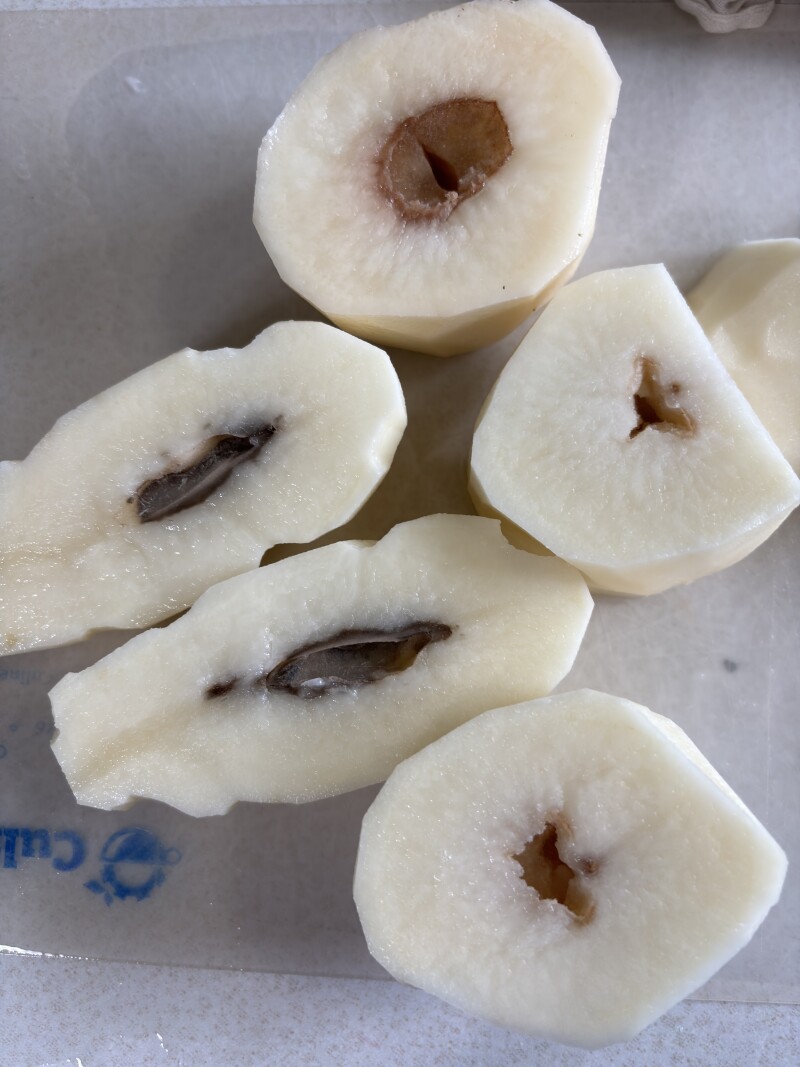
Home gardeners may encounter unexpected challenges when growing potatoes, as seen in a recent query from a gardener named Carin N.. This summer, her sister-in-law faced an unusual issue with her white potatoes. While the plants appeared healthy and suffered minimal pest damage, cutting into the tubers revealed that many were rotten. The potatoes were grown from certified seed potatoes, raising questions about what could have gone wrong.
The good news is that these potatoes are not suffering from a communicable disease. Instead, they are impacted by a physiological disorder known as hollow heart. This condition occurs when the centers of the tubers develop internal gaps, a phenomenon that has likely existed as long as potatoes have been cultivated. It is more common in larger white and russet varieties compared to red potatoes.
Understanding Hollow Heart Disorder
Hollow heart typically arises due to environmental factors that trigger rapid growth in the tubers. When potatoes experience sudden changes in moisture—such as heavy rainfall or irrigation following a dry spell—this can lead to the disorder. Additionally, fluctuations in soil temperature have also been linked to the development of hollow heart.
While potatoes with this disorder are safe to eat after removing any discolored portions, they may have a reduced storage life. The hollow areas can become breeding grounds for secondary rot, complicating storage and usability.
To mitigate the risk of hollow heart, gardeners should maintain consistent soil moisture levels, particularly from mid-summer onward. Mulching is a straightforward method to achieve this.
Winter Tree Care and Lawn Maintenance
In addition to potato concerns, inquiries about tree and lawn care are common among gardeners. Another question from Sam M. raised the issue of protecting apple tree trunks during winter. As tree wraps may no longer fit, he asked if cardboard could serve as a substitute.
Wrapping tree trunks is crucial for preventing winter sunscald, which can expose trees to damaging fungi like black rot. This type of injury can significantly shorten the lifespan of apple trees. To protect against sun exposure, gardeners often use creative methods, including burlap or cardboard wraps. Some commercial growers even use diluted white paint to reflect sunlight away from tree trunks.
In response to John S., who inquired about lowering lawn mowing height for winter, experts recommend waiting until after repeated hard freezes. Reducing the height helps diminish the risk of winter snow mold and reduces habitats for voles, which can damage lawns under snow cover. The ideal final mowing height is around 2 inches, and in some regions, late mowing can even occur as late as December 3.
For further gardening advice, Don Kinzler from NDSU Extension-Cass County invites readers to submit their questions. Queries with broad appeal may be published, providing practical guidance for home gardeners.






